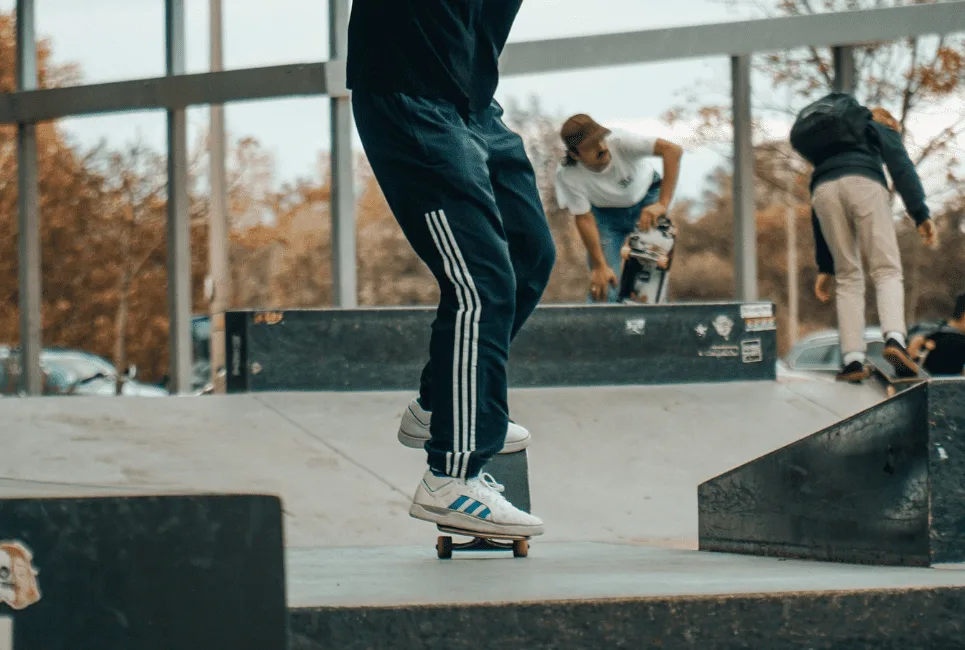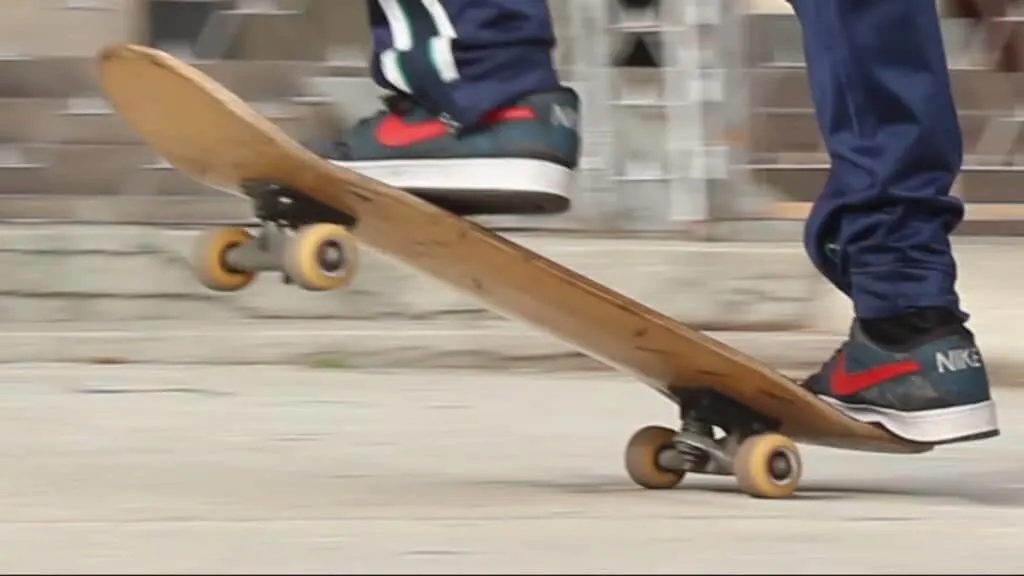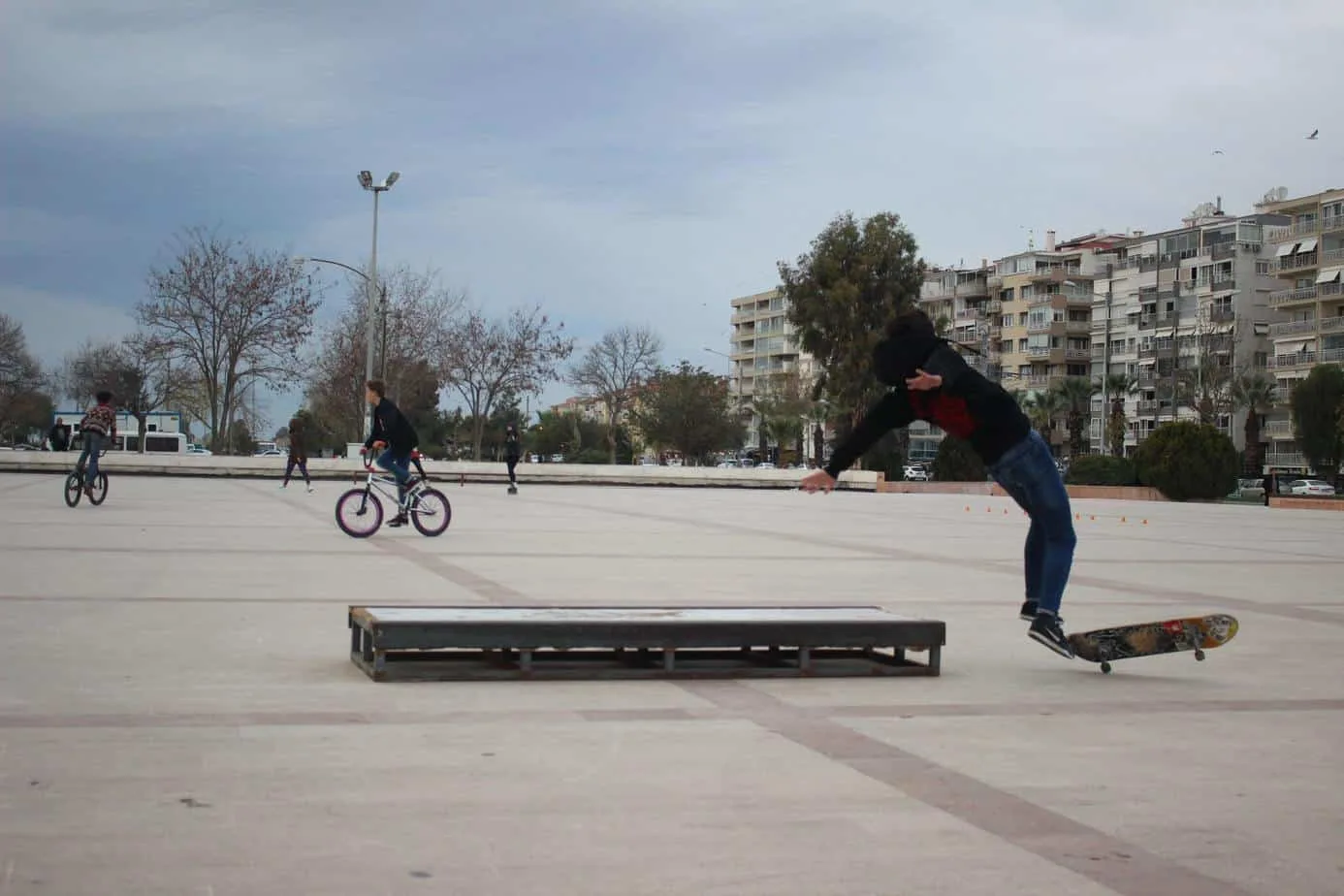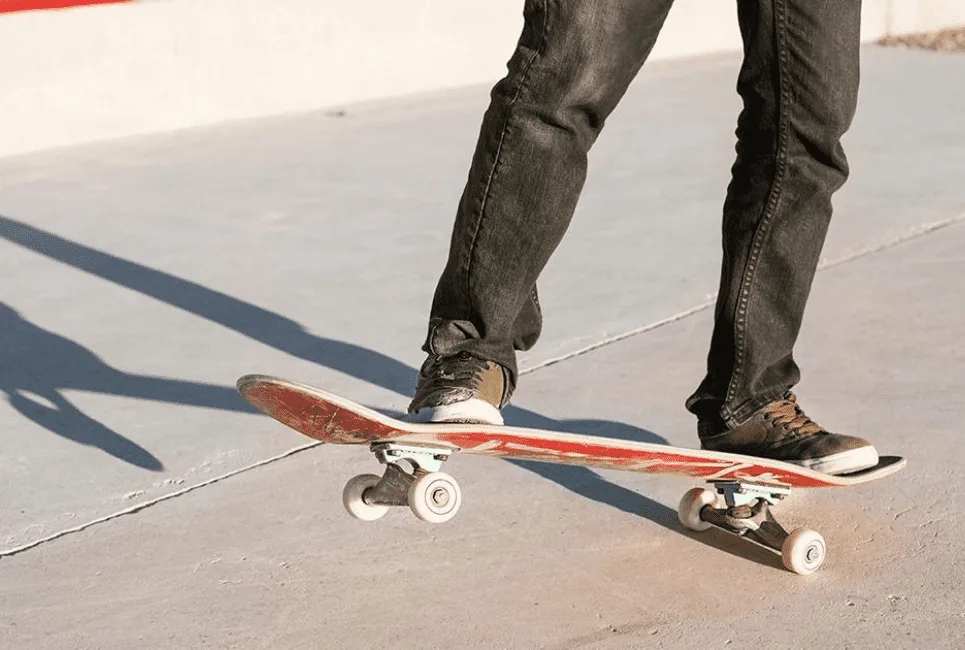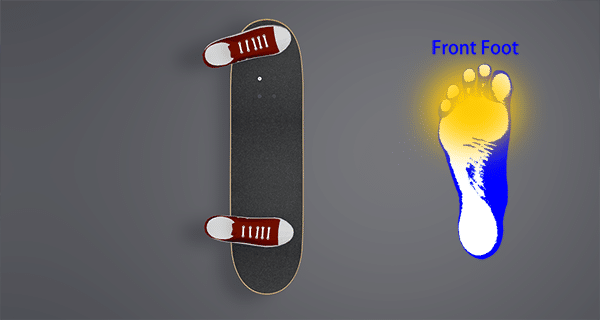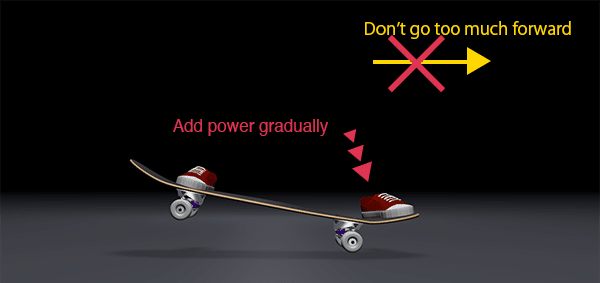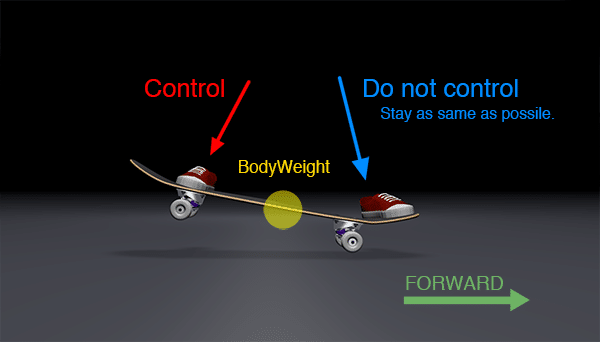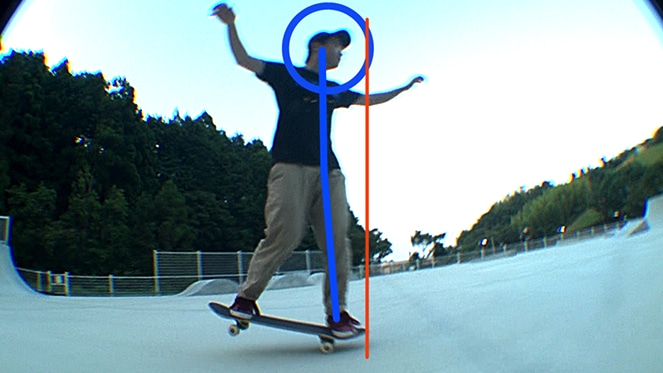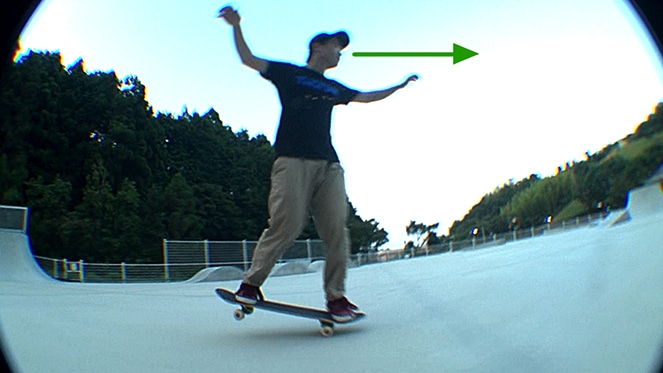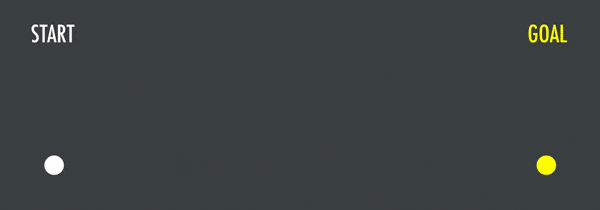Ноуз Мануал (Nose Manny)
Ноуз мануал на скейте выполняется на ровной, гладкой поверхности без камушков при помощи балансировки руками, фиксируя тело в устойчивом состоянии равновесия на передних колесиках.
Никита Ратушный — nose-manual day на Октябрьской:
Загрузить PDF
Загрузить PDF
Manual – тип фристайл-трюка в скейтбординге, очень похожий на трюк «wheelie» в экстремальном мотоспорте. Он заключается в балансировании на одной из колесных осей скейтборда во время движения. Вы можете балансировать как на задней, так и на передней колесной оси. Если над землей приподнимаются задние колеса, трюк называется nose manual. Данная статья подскажет вам, с чего начинать. Проще освоить для начала обычный manual, прежде чем приступать к изучению nose manual, поэтому инструкции в этой статье изложены в этом порядке.
-
1
Начните движение на скейтборде вперед и поставьте заднюю ногу на хвост. Для выполнения трюка manual необходимо находиться в движении (хотя, если вы столкнулись с трудностями в освоении трюка, можно попрактиковаться в неподвижном состоянии). Катитесь вперед на медленной, контролируемой скорости в привычной позе. Затем сдвиньте заднюю ногу на хвост доски. Поставьте ее в удобном для вас положении. Как правило, нога покрывает всю изогнутую часть хвоста. Передняя нога должна находиться рядом с центром или сверху передней колесной оси.
- Возможно, об этом не стоит упоминать, но вы должны предпринять все необходимые меры предосторожности перед тем, как пытаться выполнить трюк manual. Всегда надевайте шлем (дополнительно: наколенники, налокотники и т.д.) во время катания на скейтборде. До того, как вы освоите manual, вполне возможно, что доска нередко будет выскальзывать из-под ваших ног, приводя к падению на спину. Это может привести к серьезным повреждениям, если вы не будете достаточно защищены.
- В дополнение, убедитесь, что окружающее пространство свободно от конструкций, которые могут помешать вам во время движения. Для практики больше всего подходят ровные, открытые пространства.
-
2
Согните колени. Для выполнения трюка manual крайне важно удерживание равновесия. Чтобы удерживать manual, необходимо научиться мгновенно регулировать положение тела, равномерно распределяя свой вес и сохраняя равновесие. Это будет намного сложнее сделать, если ваши колени не будут согнуты. Находясь в движении, обязательно согните немного колени, прежде чем выполнять manual.
-
3
Перенесите свой вес на заднюю ногу, наклонившись телом вперед. Медленно и аккуратно начните переносить свой вес на заднюю ногу, в то же время понемногу наклоняясь вперед верхней частью тела. Увеличивающееся давление на заднюю ногу должно в конце концов привести к приподниманию передней колесной оси скейтборда. Наклоняясь вперед, вы сохраняете положение центра тяжести над доской, что не дает ей выскочить из-под ваших ног.
- Не отклоняйтесь назад, даже если интуиция подсказывает вам так поступить. Это самый быстрый способ потерять равновесие и упасть на спину.
-
4
Сохраняйте равновесие. Если все прошло удачно, на данном этапе вы катитесь на скейтборде вперед с приподнятой носовой частью доски (если это не так, вам нужно больше практиковаться.) Теперь ваша задача – сохранять это положение как можно дольше. Прислушивайтесь к своему природному чувству равновесия. Если вы чувствуете, что начинаете падать вперед, отклонитесь назад и приложите дополнительное давление на хвост скейтборда. Если чувствуете, что начинаете падать назад, наклонитесь вперед. Сложность заключается в том, чтобы не переусердствовать в попытках скомпенсировать отклонение назад или вперед. Старайтесь делать незначительные телодвижения, контролируя перемещение своего веса.
- Вполне справедливо думать, что вы, наверняка, пройдете через многочисленные падения, прежде чем научитесь выполнять этот трюк, поэтому благоразумным будет использование наколенников, налокотников и защитных пластин на запястья.
- Не удивляйтесь, если в первый раз у вас не получится удержать manual больше 1-2 секунд. Для выполнения этого трюка требуется очень много терпения и тренировок. На начальном этапе вы, возможно, даже не сможете правильно использовать мышцы для сохранения равновесия. Вы должны пройти через этот сложный этап!
-
5
Надавите передней ногой на доску, чтобы завершить трюк. Успешное выполнение трюка включает в себя не только умение встать в положение manual и удерживать его, но и переход в нормальное состояние без падения. Медленно перенесите свой вес с задней ноги на переднюю. В то же время медленно верните верхнюю часть тела (которая на данном этапе наклонена вперед) в нормальное вертикальное положение. Передняя часть доски должна успешно вернуться в горизонтальное положение и встать на колеса.
Реклама
-
1
Начните движение вперед с согнутыми коленями, расположив переднюю ногу на носовой части деки. Выполнение nose manual потребует от вас прямо противоположных действий по сравнению с трюком manual. Начните катиться вперед, затем измените свое положение таким образом, чтобы передняя нога оказалась на сгибе носовой части доски. Поставьте заднюю ногу болты или рядом с ними. Немного согните колени. Такое положение тела позволит вам приподнять задние колеса скейтборда над землей, балансируя на передних.
-
2
Мягко надавите на носовую часть скейтборда. Двигаясь вперед, перенесите свой вес с середины доски на переднюю ногу. Приподнимите руки для равновесия, и, если необходимо, совсем ненамного отклонитесь назад. Поначалу это неизменно будет приводить к выскакиванию доски из-под ваших ног. Но это вполне нормально, и со временем вы разовьете в себе умение определять положение центра тяжести и лучше сохранять равновесие.
-
3
Сконцентрируйте свой вес над передними колесами. Чтобы удержать nose manual во время движения вперед, вам необходимо аккуратно распределить свой вес над передней колесной осью. Поначалу это будет чрезвычайно сложно, но со временем станет проще. Если у вас трудности в удержании равновесия, попробуйте перемещать бедра и/или торс, чтобы скомпенсировать отклонения. Также можно попробовать мягко надавить вниз задней ногой, чтобы сохранить равновесие.
- Когда вы научитесь удерживать nose manual в течение 1-2 секунд, начните пытаться удержать его на все более длительное время. Терпение и практика помогут вам значительно развить чувство равновесия, и балансирование в положении nose manual будет даваться вам так же легко и естественно, как и во время обычного manual.
-
4
Чтобы завершить nose manual, надавите на доску задней ногой. Как и в случае с обычным manual, чтобы вернуться в нормальное положение, необходимо опустить приподнятую часть доски на землю. В то же время перенесите свой вес обратно в центр доски, чтобы сохранять контроль было легче. Наконец, переставьте свои ноги в привычную позицию.
Реклама
Советы
- Когда вы переносите свой вес на заднюю ось, ваше тело не должно отклоняться назад. Отклоняться должна только нижняя часть тела, в то время как ваша грудь будет наклонена немного вперед для сохранения равновесия.
- Если балансирование задней ногой не помогает и хвост деки задевает о землю, попробуйте подвинуть ногу на участок сгиба доски между болтами и хвостовой частью.
- Держите руки в воздухе. Это, возможно, выглядит немного глупо, но помогает сохранить равновесие.
- Наберите небольшую скорость, это облегчит вам задачу.
- Согните колени для дополнительного равновесия.
- Не отклоняйтесь назад слишком сильно. Хвост деки ударится о землю, что может привести к падению.
- Прежде чем попробовать выполнить трюк, попрактикуйтесь, держась за какой-нибудь устойчивый объект, чтобы понять, как правильно удерживать баланс.
- Для начала будет полезно попробовать выполнить этот трюк на траве или ковре.
- Завершая manual, опускайте доску быстро. В противном случае вы можете потерять равновесие и упасть.
Реклама
Предупреждения
- В процессе обучения вы будете падать. Если вы будете готовы к падению и успеете встать на ноги, вам удастся уберечь себя.
- Берегитесь палок и камней. Они помешают вашему движению.
- Надевайте защитное снаряжение. В противном случае вы рискуете получить увечья.
Реклама
Что вам понадобится
- Скейтборд
- Подходящее пространство для практики.
Об этой статье
Эту страницу просматривали 15 040 раз.
Была ли эта статья полезной?
Bmx nose manual (ноус мануал) — трюк выглядит как езда на переднем колесе велосипеда. Для того чтобы научиться nose manual на bmx посмотрите видео обучение внизу данной страницы. А также понять, как ездить на переднем колесе Вы можете после прочтения этого материала с подробным описанием (видео how to). Вы задаётесь вопросом, «как делать nose manual»? Тогда Вы попали по адресу. Для начала стоит уяснить один важный момент. Езда на переднем колесе — довольно сложный баланс в bmx катании. Умение держать равновесие на nose manual-е у Вас придёт только со временем, для этого надо много тренироваться. И так предлагаю Вам внимательно прочитать статью ниже, подготовленную livebmx.ru. Читайте также статью «нужны ли тормоза на bmx».
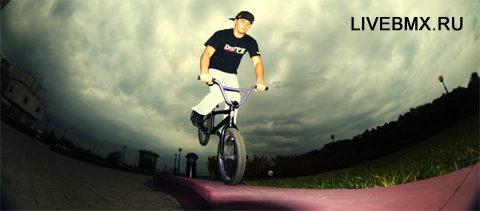
Езда на переднем колесе — советы и обучение
И так, «с чего же стоит начинать учиться nose manual», думают читатели? Я Вам предлагаю для начала понять один из самых важных моментов этого трюка – это точка равновесия. Ваша задача стоя на земле или при движении на маленькой скорости прочувствовать «точку баланса» nose manual-а. Это такое положение, при котором Вас по-минимому тянет назад и вперёд. Помните, что все райдеры разные физически (рост и так далее), соответственно и езда на переднем колесе у всех будет разная в плане положения корпуса, но об этом чуть позже. Мой вариант удерживания равновесия во время исполнения этой фишки следующий. При езде на одном колесе я стараюсь заднюю часть велосипеда держать повыше, при этом плечи держу примерно над осью переднего колеса. Далее про сам баланс на этом трюке. Кстати, в дальнейшем Вы сможете делать интересные комбинации вроде nose manual 180 или даже на 360.
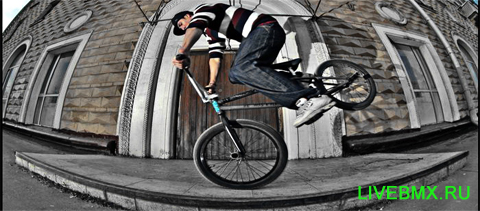
Как делать nose manual на bmx (how to баланс)
Прервитесь, bmx boy игра ожидает Вас. Как я уже сказал, в этой статье я рассказываю про мой способ балансирования при езде на переднем колесе. Я не сильно наклоняю вес тела (корпус) вперёд, когда делаю nose manual на bmx. Учитывайте то, что руки в момент выполнения должны быть сильно напряжены. Так как получается так, что Вы практически делаете упор на одни кисти. Что касается равновесия – ему тяжело научить, поэтому я просто вкратце опишу какие действия выполняю, чтобы подольше проехать на переднем колесе (техника bmx nose manual). Если Вы чувствуете, что Вас перекидывает вперёд – постарайтесь как бы оттолкнуться от руля, отодвигая плечи назад к задней части велосипеда. Тем самым Вы вернётесь в точку баланса. Если же Вы понимаете, что колесо сейчас опустится – пытайтесь надавить на руль руками и наклониться ещё больше к переднему колесу. Учитывая все эти нюансы, со временем Вы начнёте ездить на nose manual-е всё больше и дольше. Как и в любом трюке, например, nohand, стабильность приходит с практикой.
Теперь что касается техники в момент запрыгивания на передний баланс на какую-либо грань или бордюр. Делая банник просто напрягите руки сильнее обычного, так как Вам ещё надо самортизировать приземление на одно переднее колесо. И старайтесь сделать прыжок так, чтобы сразу же попасть в точку равновесия. Тогда есть шанс, что Вы сделаете длинный nose manual. А при спрыгивании делайте небольшое нолли (прыжок через перед как бы). Благодаря этому Вы не заденете бордюр при спрыгивании. Этому можно научиться только опытным путём, поэтому больше практики и тренировок. Всем желаю делать контрольный nose manual bmx, успехов! Читайте также Максим Грек интервью.
Для просмотра видео обучения у Вас на компьютере должен быть видео проигрыватель
Если Вам помог данный урок «езда на переднем колесе«, поделитесь им с друзьями или знакомыми в ICQ, социальных сетях или где-то ещё. Пришлите ссылку: http://livebmx.ru/howto/nose_manual.html
Автор статьи: Андреев Максим
Все права защищены, копирование материала разрешается только с размещением активной ссылки на livebmx.ru
- About
- Latest Posts
Callum can be found skating the local spots in Derry, mere miles from the hometown of BATB 12 Winner, Jamie Griffin, and is always looking for new and inventive ways to give you a letter in a game of S.K.A.T.E. Outside of skating, Callum is an avid gamer, a Monster Energy drink connoisseur, and can tell you anything and everything about the British sitcom Peep Show. Go on, Test him!
There are a lot of things that skaters need to practice and perfect if they want to be competent skateboarders. To land tricks you need to have confidence, determination, a technical understanding of how the trick works, and the fitness to do this trick time and time again. However, if we were asked what one attribute a skater should have if they want to shoot to the top of the pile, we would probably say balance. Balance plays a role in just about anything that you try to do on a skateboard, and if you have balance, the chances are that tricks will come much quicker for you. However, some tricks require better balance than others.
Tricks like stalls and grinds are certainly within this bracket. However, we would say that manuals are the ultimate test of a skater’s balance. This is when the sister pops their tail/nose off the ground and balances, much like a wheelie on a dirt bike. It’s a tricky skill to master, but when you do this can be an incredibly stylish way to extend lines and make tricks look even more complex. However, you may be wondering how you go about mastering the manual.
Well, that is exactly what this guide is for. In this article, we take a look at the different variations of manual, how-to manual, and we will even give you some background on this timeless skating trick. So sit back and relax as we guide you through the art of manualling.
What is a Manual/Nose Manual?
A manual, as we mentioned above, is when the skater is rolling on their board, and they put pressure on the nose or tail of the board. This allows the board to continue rolling on two wheels and showcases the skater’s excellent balance and board control. This trick is pretty stylish on its own and tricky to do for a long period of time. However, skaters tend to combine this with other tricks to make it even more complex and aesthetically pleasing.
Who Invented the Manual/Nose Manual?
This one is a very hard question to answer. It would be simple to credit Rodney Mullen with yet another invention as he was responsible for just about every modern trick we know and love today. However, due to the simplicity of a manual, we can only assume that skaters were doing this as far back as the 1960s in the era of Tony Alva and Stacey Peralta. Sure, the guys back then were more interested in carving up bowls than trying intricate freestyle stuff. However, we can say with some certainty that just about everyone that owned a board at the time would have performed a tail/nose wheelie as they used to call them back then.
The first notable skater from the sixties that popularised the ‘skateboarding wheelie’ was Torger Johnson who was the self-proclaimed wheelie king of the Hobie Vita-Pakt team. So it would perhaps be fitting to credit Torger with the trick. However, the manual as we know it today could easily be credited to any skater in the nineties that made it more than just a wheelie. So that would be skaters like Daewon, Mullen, or Gonzales.
Then there is also the argument that while skaters have performed manuals and made them look nuanced and stylish. It’s worth mentioning that no one has done more for the art of the manual like Sean Malto. Malto even has a rule in BATB named after him after his battle with Donovan Strain. So, what we are saying is that we don’t have a concrete answer to offer, so pick your poison.
Are There Any Variations of the Manual/Nose Manual?
Yes, skaters can pull off a wide array of manual variations, often making them look effortless, which we assure you is far from the case. Variations of manuals can be how you get in and out of the trick or what you do when you are in the manual. This means that there is a lot of options to explore. However, you may be wondering what variations there are to spice up your flat ground runs. Well, check them out below:
The Flip in/out: Firstly, we have the flip in or the flip out. This is when the skater either does a flip trick, often onto a ledge or manny pad. Then lock themselves into a manual and rolls along the rest of the obstacle. Or alternatively, this can be when the skater ollies onto a platform, rolls along to the end, and then flicks a fliptrick to end the line. We will admit that flipping out is a much harder skill to master, but both look insanely cool.
The Flip in and out: This one is pretty self-explanatory. It’s when the skater combines both of the options mentioned above. Meaning that the skater flips into a manual and then performs another flip trick to end the line. This takes a lot of board control, and usually if the manny pad is quite short, requires fast, precise movement.
Manual Reverts: This is a skill that is the epitome of board control. This is when a skater is in a manual, and they turn their body and the board in a 180-degree rotation while the board is still on the ground, much like a revert. However, the tricky part of this trick is that the skater never stops doing a manual, so you must pivot from a manual to a nose manual or vice versa seamlessly.
Spacewalk: You may have seen this trick when you were playing old THPS games back in the day. Well, we are here to tell you that this is a real trick and it looks just as stylish in reality. This is when the skater will use the swinging motion of their upper body to counteract the swinging in the opposite direction being performed by their lower half. Think of it as a very intricate version of the tic-tac.
Primo Slide: This one isn’t technically a manual, but if you do it with some wax on the ground to keep your speed, we are willing to count it. So, the primo slide is when the skater is rolling along, and they use their weight to prop the board up onto its side, then stand on the opposite, thin side of the board, allowing the wood to scrape off the floor and travel along the ground. This only really works if you remove all the friction from the ground with wax so cover the floor and cover your board for good measure.
One Foot Manual: Then lastly, we have the one-footed manual, which is exactly what you would expect. This is when the skater places all their weight on one foot while standing on the nose or tail of the board and then travels along as they would in a normal manual. This is quite a simple one to master if your standard manuals are already solid. However, we will say that it is much harder to do a nose manual this way.
What Tricks Do I Need to Know Before Trying a Manual/Nose Manual?
A manual, at its core, is a very simple movement. So much so that just about anyone who can stand on a board could perform one for at least a fraction of a second. The real art of the manual is keeping it going, adding parts to the trick to make it more stylish, and most importantly, making it look effortless as you do. What we are saying here is that you don’t really have to know any tricks to begin practising manuals. However, there are several skills that we would urge you to have locked in before you try to master manuals. Here they are listed below:
- Rolling and stopping
- Turning
- Pivots
- Kickturns
- Curb stalls
- Powerslides
- Tic-Tacs
- Riding fakie/switch
- Reverts
- FS/BS 180’s
- Ollies
Okay, so we have broken down the different variations of the manual, given you some background on the trick, and have told you what tricks would help you succeed. Now it’s time to guide you through the process of doing your first manual. Just for clarity, we will be amalgamating the nose manual and the standard manual as the movements are identical but reversed to accommodate which side of the board you are applying pressure to. So without further delay, here is our guide on how to manual/nose manual:
Step One: The first step for completing a manual that doesn’t end after a fraction of a second is getting your stance right. If you are doing a standard manual, you will want your dominant foot placed on the edge of the tail, with your toes parallel with the outer edge of the board. You should have the ball of your foot in the pocket so you can distribute your weight evenly. Then you’ll want to place your other foot around the front truck bolts.
For a nose manual, you will want to apply the same foot position as the standard manual. However, your front foot will be placed on the nose, and the dominant foot will be placed on the back truck bolts.
Step two: The next step is applying pressure to lift the board off the ground. The trick to this is applying equal pressure with both feet. If you apply too much pressure with your dominant foot (or front foot for a nose manual), then your board will hit the ground, and that’s how you get razor tail, so avoid this. Instead, apply enough pressure on both sides to allow the board to pop up just a little bit. Then it becomes a test in balance.
Step Three: When doing a manual, a lot of skaters will focus on what both feet are doing. In our opinion, this will only hinder you from doing long, flowing manuals. Instead, you should simply focus on your front foot (or dominant foot with a nose manual). This allows you to ease off or apply more pressure as needed without overloading your brain by worrying about what both feet are doing. The fact of the matter is that the back foot is more or less a passenger. You need to keep it pretty rigid and adjust elsewhere.
Step Four: Provided you have found the sweet spot and have mastered the ability to adjust the pressure on the board as needed. You will then need to focus on what your body is doing. If you have poor posture or a weak centre of gravity, then the manual will fall apart pretty quickly. So what we would suggest is that you pick a spot in front of you and stare at it, keeping your head up straight as you do. Plus, we would urge you to keep your shoulders back and square. If they are floppy, this gives you more chance of losing that sweet spot. So be aware of your body position as you go.
Step Five: If you have completed all the above steps, all that’s left to do is ease off the pressure, let your nose/tail come back onto the ground and then ride away having completed a stylish and lengthy manual.
Most Common Mistakes When Learning to Manual/Nose Manual
Just like with most tricks in the world of skateboarding, there are a wide variety of common mistakes and misconceptions that stop skaters from mastering their desired tricks. The manual and nose manual is no different. However, we are here to make you aware of the common errors and give you some insight into how to stop these habits from being an issue. Meaning that you’ll be manualling the entire manny pad in no time at all. Here is a list of common errors that you need to avoid:
Focusing on the back foot: One of the most common errors is focusing on what the nose/tail foot is doing. Applying and releasing pressure using this foot is very tricky when using this method, and more times than not, you’ll scrape along the ground and kill the manual stone dead. To fix this, you’ll want to use your front foot to apply and release the pressure while keeping your back foot pretty rigid to hold that sweet spot.
Leaning back: Another common error is leaning back when performing a manual. If you are leaning back, this will throw off your centre of gravity, and it means that when you need to apply pressure to the front, it will be too much of an adjustment, and it will all fall to pieces. So keep the shoulders square and keep your head up to maintain solid posture.
Poor Foot Position: Then last, you have poor foot position. This is one that I personally fell into the trap of for some time. Unless you practice the foot position that we suggested in the guide above, you are going to have a hard time. My personal issue was that I was hanging off the outside pocket, as I like to do pivots quite a lot. So the board would immediately start off centre, and this is a variation of a common problem. So use the foot position shown in the guide, and you should fix this issue.
Tips To Improve My Manual
While the guide is a very helpful tool to get your manuals looking slick. The simple fact of the matter is that manuals take time and practice to perfect, and even if you do everything right, it won’t guarantee success. However, there are several techniques that one can use to make learning a little easier. So here is a quick list of helpful tips that will help you manual in style:
Use Something to Balance: In the initial stages of learning to manual, it’s about finding that sweet spot. However, if the process of popping into a manual and finding your centre of balance is alien to you, then why not take balance out of the equation. You can use a bench or ledge to lean on while you balance on your board and find the sweet spot. Then as you grow in confidence, you can intermittently take your hands away from the ledge and build up your confidence without a support. You can also use a 3LT soda bottle as a good point of reference if you balance your board on it. As seen on the popular Youtube channel, Braille Skateboarding.
Move around: The above tip is very much aimed at static practice. However, it is much easier to perform manuals while moving. So build up a little bit of speed and then try your manuals.
Set Goals: When doing manuals, it’s a good idea to set attainable goals. For example, you can start at one crack on the ground and then try to maintain your balance until the next one on your path. This allows you to slowly build up your balance and means that you get some satisfaction as you reach each goal.
Practice lots: As much as we would love to say that reading this article will grant you perfect balance, that simply isn’t the case. Balance is something that you attain with experience and practice. So let out there and try manuals, and with each attempt, you will get one step closer to mastery.
Perfectly Balanced, As All Things Should Be!
As you can see from the information above, manuals are a simple trick to do but a very difficult trick to do well. There are lots of ways to make this trick look cool, tonnes of unique ways to practice this trick, and hopefully, thanks to this guide. You will now be able to perform manuals when you head out on your next session. So what are you waiting for, get out there and find that sweet spot!
FAQ Section
If you have reached the end of this article and you still don’t have the answers that you are looking for, you may find them in our FAQ section. Check it out below:
Question: What is The Longest Manual Ever?
Answer: This accolade belongs to Swiss skater Simon Stricker. This skater was able to record a manual that lasted for a staggering 2.173KM, and the skater held an average speed of 45kmph. We did some calculations, and that means that the skater would have held this manual at this blistering speed for about two minutes and fifty-four seconds. This isn’t the official record held in the Guinness Book of World Records, as this wasn’t an official attempt. However, we aren’t sticklers for the rules, and we want to shine a spotlight on the amazing feat.
Question: What is Malto Manual S**t?
Answer: Sean Malto is a pro skater that skates for Girl. This guy is a very accomplished skater who has medalled at the world championships and has even won a street league back in 2011. However, Malto is perhaps best known for his insane manual abilities. The term ‘Malto Manual s**t’ came to be after a battle of the Berrics unsanctioned match with Donovan Strain where Malto started breaking out intricate manual lines with flip tricks incorporated for good measure. There aren’t many skaters that can match Malto in terms of manual mastery, and as a result, a new rule was added the following year. This rule would read ‘No Malto manual S**t.
Question: What is a Manny Pad?
Answer: A manny pad is a wide, flat ledge that is usually an upstep around the same size as a curb or slightly higher. This is built for skaters to ollie up onto, manual the distance of the raised platform, and then drop off.
So that is our guide explaining all there is know about the transition trick, the rock to fakie. What did you make of this article? Was this helpful and informative for you? What other tricks would you like to see us cover in the future? Let us know in the comments section below and as always, thank you for reading.
Looking for more interesting readings? Check out:
- How to Nollie: A Complete Guide for 2022
- How to Pop Shuv-it
- How to Heelflip: The Quickest Way to Learn
The nose manual is a trick best learned after becoming familiar with the tail manual.
The concept is essentially the same, though it presents a higher challenge in that you are balancing on the front wheels while moving forward.
What is a Nose Manual?
The nose manual is the opposite version of the tail manual. During a nose manual, it is the tail of the skateboard which stays off the ground.
The increased risk in a nose manual compared with a tail manual is that if you lose balance and touch the nose to the ground, you are most likely to bail. Losing balance during a regular manual and touching the tail to the ground, on the other hand, is almost always a forgiven mistake.
How to Nose Manual?
The keys to the nose manual are similar to those of the manual. Maintain a centered body position as well as an equal proportion of pressure bearing down on each foot. Channel your inner awesomeness, keep it light, and keep it cool playa.
Stance for Nose Manual
Basically invert the stance you practiced for your tail manual. Your front foot’s toes should be positioned on the nose while your back foot is placed over the back hardwares. Your body weight should be generally centered over the board.
Keep your eyes focused about a foot ahead of the nose going forward as you gain familiarity with the technique.
Finding Pressure Balance on Your Feet
To measure how much pressure should be applied to each foot, move your body weight gradually forward and press down on the nose.
Try not to lean forward too much, as it is preferable that you lose balance and touch the back wheels rather than lose your balance and bail forward. Keep practicing!
Controlling Balance with Back Foot
As opposed to the tail manual, where the front foot is the main source of control, during a nose manual it is your back foot which must commander control of balance during the technique.
Shoulders and arms are again helpful as supplementary aids to help you maintain your balance.
Focus on Your Head Position
Your head should be almost directly above or just a little behind your front foot. Try not to let your head get ahead of your front foot.
Start Looking Further Ahead as you Get Familiar with the Technique
As you get used to performing the nose manual, you should stop focusing your eyes directly ahead of the nose and start focusing your line of sight further and further ahead to facilitate longer distances performing the technique.
How to Practice Nosemanual?
Why not practice the nose manual in a similar way to that of the tail manual? Nollieskateboarding is stuck for ideas! Set distance goals then chart them progressively further apart! Be creative, have fun!
Q&A
Q : “How can I ollie (to) nosemanual?”
As with the manual, the most important thing is being prepared both mentally and physically (and spiritually!) to nosemanual before you land. If your weight is too far forward at the moment of landing, you may stick to the ground and bail, so be careful.
Q : “How to Dismount a Curb/Ledge from Nose Manual?”
First familiarize yourself with nose-manual to nollie on flatground, using the same principles as those found under ‘manual to ollie’ in the ‘tail manual’ tutorial section. When you reach the end of a curb or ledge in the midst of a nose manual, press your nose a little forward with your front foot, essentially doing a light nollie off of the curb/ledge.
Q : “How to Flip Out?”
First familiarize yourself with both nose manual and nollie kickflip. To be honest, this is getting into ‘not sure how much written instruction will be helpful to you’ territory. If you’ve come far enough that your trying to figure out how to flip out of a nose manual, you’re doing something right already. Keep at it, trust your instinct and your reason, and keep practicing! Nollieskateboarding believes in you!
CHECK OUT!
Check out these pros of the nose man-u-al-o’s. In the ‘manual’ tutorial we video-referenced top ranked technical skaters such as Daewon Song, Joey Brezinski, and Rodney Mullen. Here we are going to reference a few more great skateboarders who have nose-manual proficiency!



